Virtual File System
Contents
The virtual filesystem provides a framework that separates file-system independent and file-system dependent code.
It allows different file-systems to work together, and appear as if they were connected.
for example, mounting a network drive into a folder on your computer
- They provide a single system call interface which will work for all file systems
- File-based interface to arbitrary device drivers (
/dev) - File-based interface to kernel data structures (
/proc) - Provides an indirection layer for system calls
- Automatic setup of file operation tables
- Forwards the call to the correct handler
VFS
- Represents all file system types
- Contains pointers to functions to manipulate each file system as a whole (
mount,unmount)
Vnode
- Represents a file/inode in the underlying system.
- Points to the real inode
- Contains pointers to functions to manipulate the inodes (
open,close,read,write, ...)
| VFS Structure | Vnode Structure |
|---|---|
 | 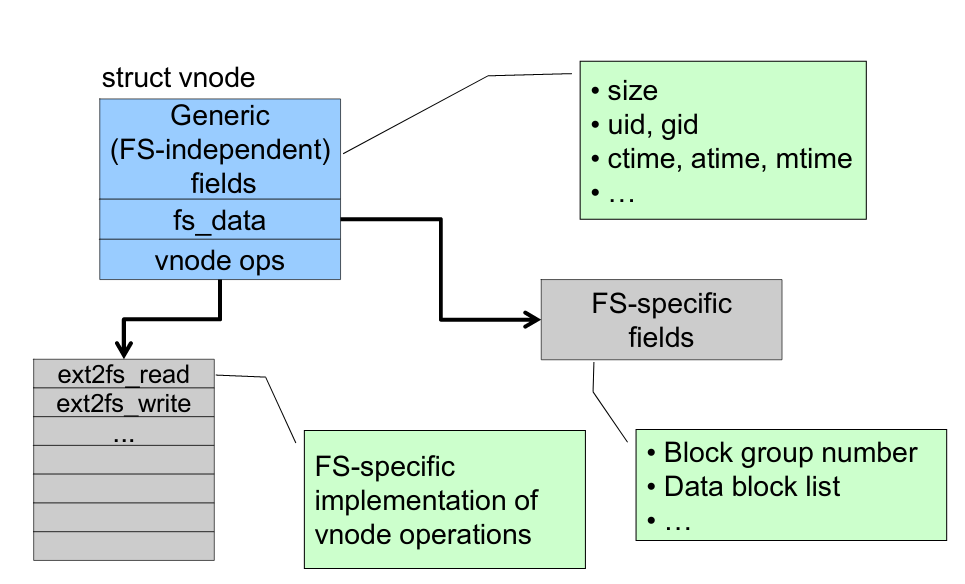 |
OS/161
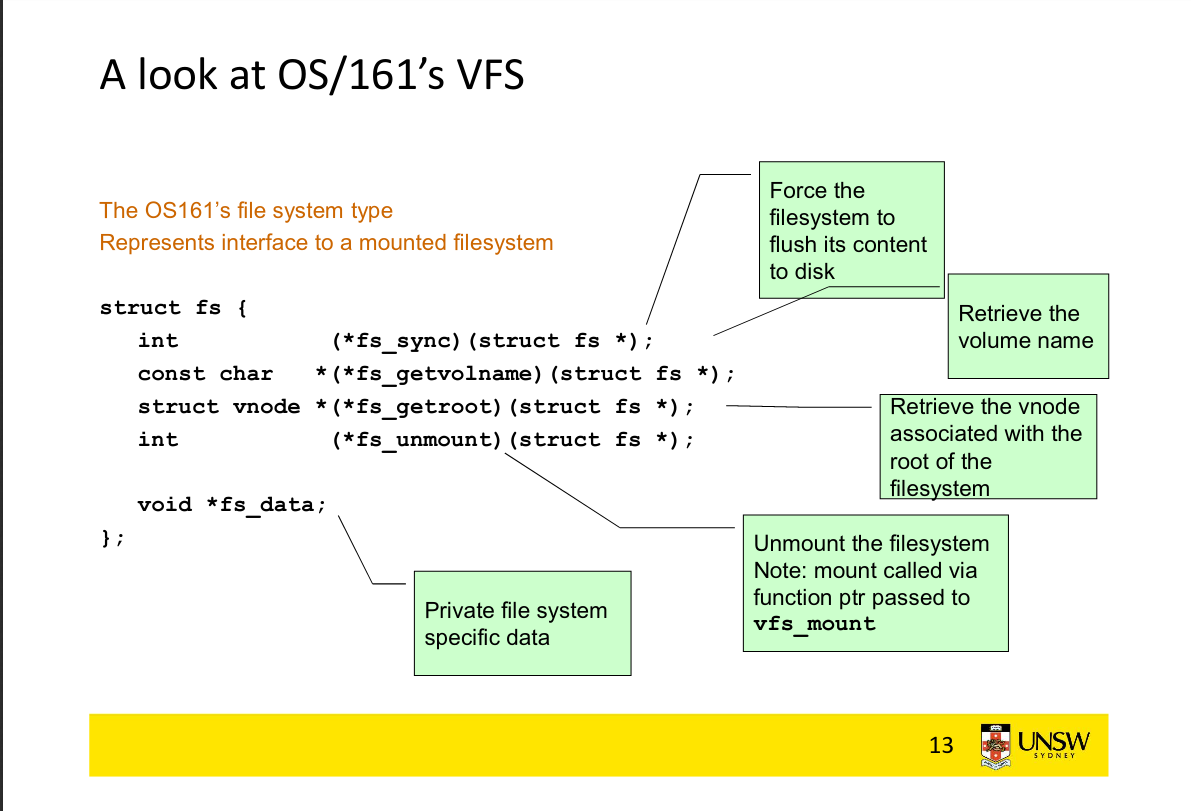
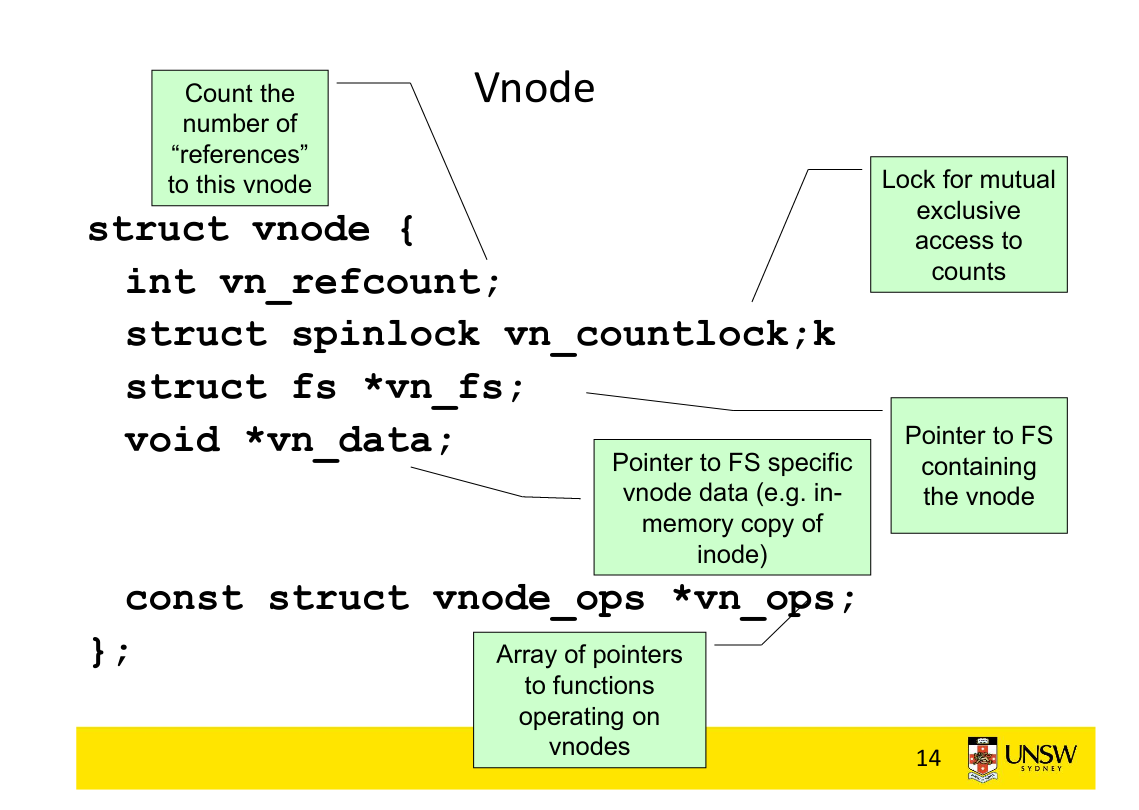

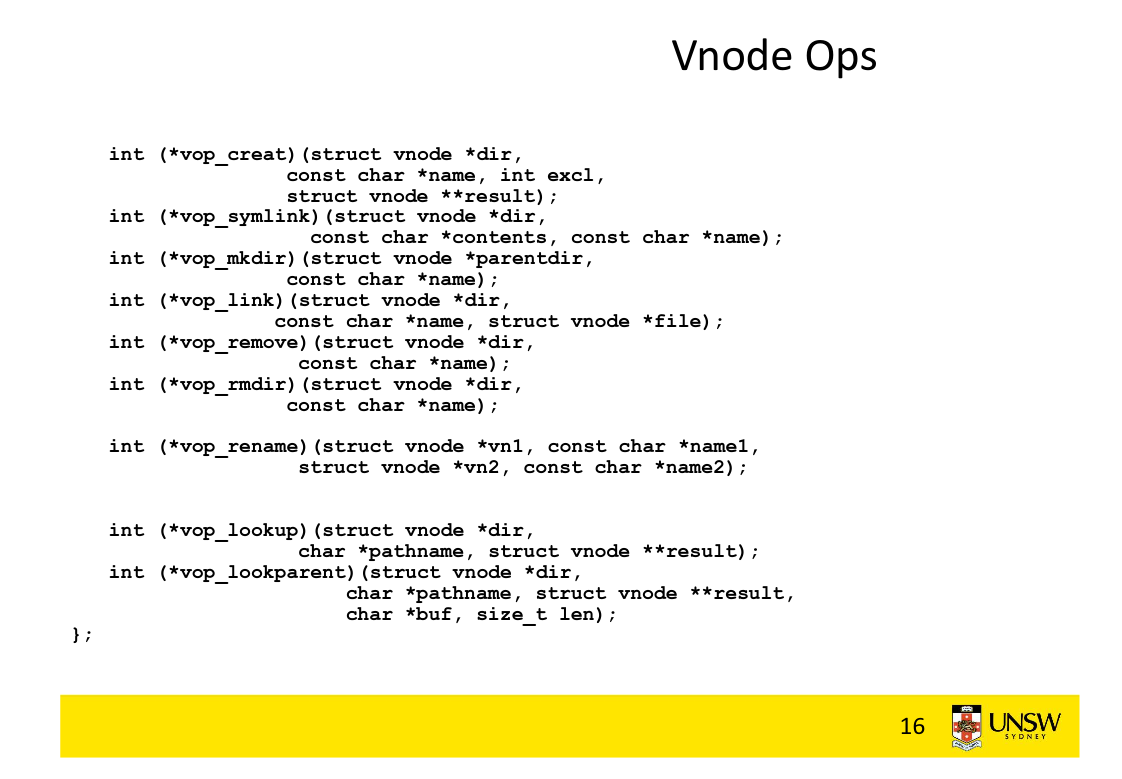
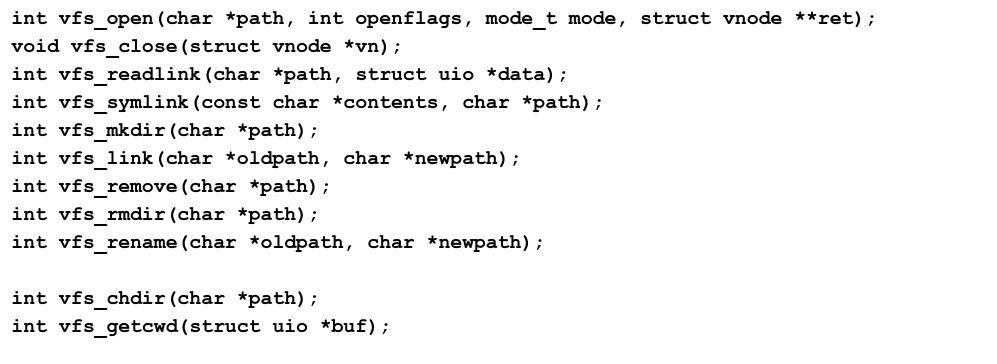
File Descriptors
Each open file has a file descriptor, which we pass into file operations (read, write, lseek, etc).
File descriptors also hold other state values
- File pointer
- Where we currently are in the file
- File mode (read only?)
File Descriptor Table
The File Descriptor table is a map which translates a file descriptor (numerical number) into a vnode in the Open File table.
Open File Table
The Open File table stores the vnode that are currently in use
Multiple Processes
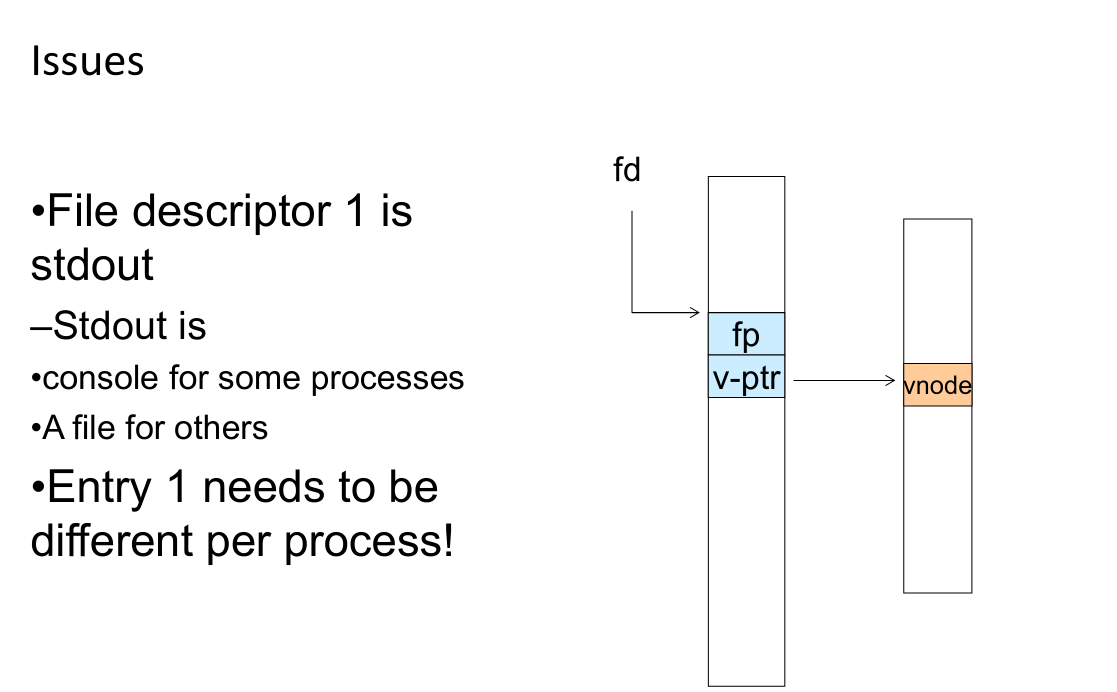

Each process needs to have its own File Descriptor table, so that entry 1 of one process does not need to have the same value as entry 1 of a different process. The Open File table, however, is a global structure that all processes share.